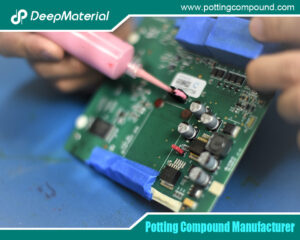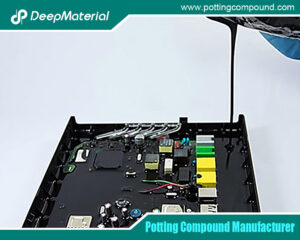
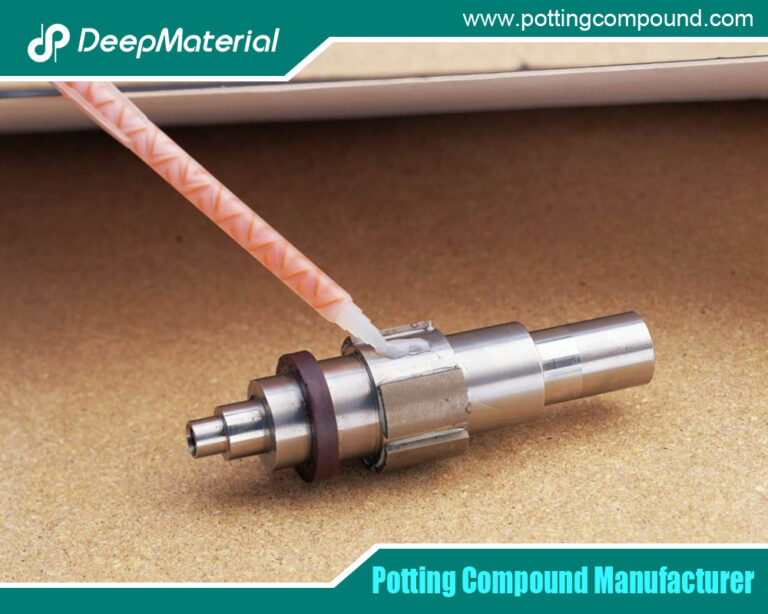
Microencapsulated Self-activating Fire Extinguishing Gel: A Revolutionary Advancement in Fire Safety
- Electronic Potting Material Manufacturer
- September 25, 2024
- Acrylic Conformal Coating, acrylic vs silicone conformal coating, Benefits of Potting Electronics, china electronic potting silicone manufacturer, china electronic potting silicone supplier, circuit board potting, circuit board potting compound, conformal coating, conformal coating electronics, conformal coating for electronics, conformal coating for pcb, conformal coating for pcb standards, Conformal Coating in Electronic, conformal coating in electronics market, conformal coating manufacturers, conformal coating material, conformal coating material types, conformal coating overspray, custom automated electronics potting, deepmaterial PCB Potting, deepmaterial potting compound, electrical potting compound, Electronic Encapsulant Potting Compound, Microencapsulated Self-activating Fire Extinguishing Gel, Self-activating Fire Extinguishing Gel
Microencapsulated Self-activating Fire Extinguishing Gel: A Revolutionary Advancement in Fire Safety
Introduction to Fire Safety Challenges
Fire safety has always been a crucial concern across various sectors, including industrial, residential, and commercial spaces. The dangers posed by fires are not only a threat to human life but also result in significant property damage and economic loss. Traditional fire extinguishing systems, such as sprinklers, fire extinguishers, and fire suppression systems, have been used for decades. However, these systems often come with limitations, such as delayed response times, potential damage to property and equipment, and the need for manual activation in some cases.
In recent years, advancements in materials science and fire safety technology have led to innovative solutions addressing these challenges. One such innovation is the Microencapsulated Self-activating Fire Extinguishing Gel. This cutting-edge technology offers a more effective, responsive, and versatile approach to fire suppression, making it a valuable addition to the arsenal of fire safety tools.
Understanding Microencapsulation Technology
Before delving into the specifics of microencapsulated self-activating fire extinguishing gel, it is essential to understand the concept of microencapsulation. Microencapsulation is a process in which tiny particles or droplets of a substance are coated with a protective shell or membrane. This coating can be made from various materials, including polymers, proteins, lipids, or synthetic compounds. The encapsulated material, known as the core, is protected from external factors such as air, moisture, or light, ensuring its stability and controlled release.
Microencapsulation technology has been widely used in various industries, including pharmaceuticals, food, cosmetics, and agriculture. In fire safety, microencapsulation offers unique advantages, such as the ability to encapsulate fire-extinguishing agents within tiny capsules, ensuring their stability and targeted release when needed.
How Microencapsulated Self-activating Fire Extinguishing Gel Works
The Microencapsulated Self-activating Fire Extinguishing Gel is a specialized fire suppression material designed to respond automatically to the presence of a fire. The gel consists of microencapsulated fire-extinguishing agents suspended in a gel matrix. These agents are typically chemicals that can rapidly cool the fire, displace oxygen, or interrupt the chemical reactions responsible for combustion.
Key Components:
- Microencapsulated Fire-Extinguishing Agents:These are the active components responsible for suppressing the fire. They are encapsulated in tiny, heat-sensitive capsules that remain stable under normal conditions but release their contents when exposed to high temperatures, such as fire-generated ones.
- Gel Matrix:The gel serves as the carrier medium for the microencapsulated agents. It provides stability and adhesion, allowing the gel to be applied to various surfaces, including walls, ceilings, and equipment. The gel matrix also helps slow fire spread by acting as a thermal barrier.
Activation Mechanism:
One of the gel’s most significant advantages is its self-activating nature. When exposed to heat, such as from a nearby fire, the microcapsules within the gel begin to rupture, releasing the fire-extinguishing agents. The gel then spreads across the affected area, forming a protective layer that cools the flames, displaces oxygen, or inhibits combustion. This rapid response helps contain and suppress the fire before spreading further.
Applications and Benefits of Microencapsulated Self-activating Fire Extinguishing Gel
The versatility and effectiveness of microencapsulated self-activating fire extinguishing gel make it suitable for various applications. Some of the critical areas where this technology can be particularly beneficial include:
- Industrial Settings:
The risk of fires in industrial environments is often higher due to the presence of flammable materials, machinery, and electrical equipment. The microencapsulated self-activating fire extinguishing gel can be applied to critical areas, such as electrical panels, machinery, storage, and pipelines. Its ability to respond quickly to heat ensures that fires are suppressed before they can cause significant damage or disrupt operations.
- Residential and Commercial Buildings:
Traditional fire suppression systems, such as sprinklers, can sometimes cause water damage to property and belongings. The microencapsulated gel offers a noninvasive alternative that can be applied to walls, ceilings, and other surfaces without causing damage. In the event of a fire, the gel activates automatically, providing an additional layer of protection that complements existing fire safety measures.
- Automotive and Transportation:
The automotive and transportation industries face unique fire safety challenges, particularly in vehicles with complex electrical systems and flammable materials. The microencapsulated gel can be applied to critical components, such as battery, fuel, and engine compartments. In a fire, the gel activates to suppress the flames and prevent the fire from spreading to other parts of the vehicle.
- Aerospace and Aviation:
Fire safety is paramount in the aerospace and aviation industries, where even a small fire can have catastrophic consequences. The microencapsulated self-activating fire extinguishing gel can be used in aircraft interiors, cargo holds, and fuel tanks for rapid fire suppression. Its lightweight nature and minimal impact on equipment make it an ideal choice for these applications.
- Marine and Offshore:
The marine and offshore industries often operate in remote locations where traditional fire suppression systems may need to be more practical and effective. The microencapsulated gel can be applied to critical areas on ships, oil rigs, and other offshore structures. Its self-activating properties ensure that fires are quickly contained, even in challenging environments.
Benefits:
- Rapid Response:The gel’s self-activating nature ensures that fires are suppressed as soon as they are detected, minimizing damage and reducing the risk of the fire spreading.
- Noninvasive:Unlike traditional fire suppression systems, which may cause water damage or leave residue, the gel provides a clean and noninvasive solution that does not harm property or equipment.
- Versatility:The gel can be applied to various surfaces and materials, making it suitable for multiple industries.
- Long-lasting Protection:The microencapsulated agents within the gel remain stable under normal conditions, providing long-lasting fire protection that does not require frequent maintenance or replacement.
Environmental Impact and Safety Considerations
As with any fire suppression technology, it is essential to consider the environmental impact and safety of the materials used. The microencapsulated self-activating fire extinguishing gel is designed with environmental and human safety in mind.
Environmental Impact:
The fire-extinguishing agents used in the gel are typically non-toxic and environmentally friendly. Unlike traditional fire suppression systems that may use chemicals with ozone-depleting properties or high global warming potential, the agents in the microencapsulated gel are chosen for their minimal environmental impact. The gel is biodegradable and does not leave harmful residues, making it a sustainable choice for fire safety.
Safety Considerations:
The microencapsulated gel is designed to be safe for use in various environments, including residential, commercial, and industrial settings. The encapsulated agents are only released when exposed to high temperatures, reducing the risk of accidental exposure or release. Furthermore, the gel’s noninvasive nature means that it does not harm property, equipment, or occupants in the event of activation.
Challenges and Future Developments
While the microencapsulated self-activating fire extinguishing gel offers numerous advantages, there are still challenges to address and opportunities for future development.
Challenges:
- Cost:The advanced materials and technology used in the microencapsulated gel may result in higher production costs than traditional fire suppression systems. However, the long-term benefits, such as reduced property damage and maintenance costs, may offset the initial investment.
- Application Techniques:The gel’s effectiveness depends on proper application to surfaces and areas at risk of fire. Developing standardized application techniques and ensuring adequate installation training will be essential for maximizing the gel’s effectiveness.
- Integration with Existing Systems:In some cases, the microencapsulated gel may need to be integrated with existing fire suppression systems, such as sprinklers or alarms. Ensuring compatibility and seamless integration will be crucial for providing comprehensive fire protection.
Future Developments:
- Enhanced Formulations:Ongoing research and development efforts are focused on improving the formulations of the microencapsulated gel. This includes exploring new encapsulation materials, optimizing the release mechanisms, and enhancing the gel’s performance in extreme conditions.
- Expanded Applications:As the technology matures, there may be opportunities to expand the use of microencapsulated self-activating fire extinguishing gel to new industries and applications. This could include data centers, renewable energy installations, and hazardous material storage facilities.
- Smart Integration:The future of fire safety may involve the integration of the gel with intelligent sensors and IoT (Internet of Things) technology. This could enable real-time monitoring of fire risks and automatic gel activation in response to detected threats, further enhancing fire protection.
Conclusion
The Microencapsulated Self-activating Fire Extinguishing Gel represents a significant advancement in fire safety technology. Its ability to respond rapidly to fires, versatility, noninvasive nature, and environmental benefits make it a valuable addition to the range of fire suppression tools available today. As research and development efforts continue, this innovative gel has the potential to become a standard solution for fire protection across various industries, contributing to safer environments and reducing the devastating impact of fires on people, property, and the environment.
For more about choosing the Top Microencapsulated Self-activating Fire Extinguishing Gel: A Revolutionary Advancement in Fire Safety, you can pay a visit to DeepMaterial at https://www.pottingcompound.com/ for more info.
Recent Posts
- The Development Trend and Future Prospects of Electrical Potting Compound in the Glue Industry
- The Conformal Coating for PCB Market Has Entered an Explosive Period: Key Drivers and Reports Detailed
- How Does Epoxy Encapsulated LED Work?
- Which Glues Are Suitable for Encapsulation of Electronic Products?
- What Are the Design Standards for the Glass Transition Temperature (Tg) and Tensile Modulus of Automotive Electronic Encapsulants Adhesives?
- Usage Methods of LED Potting Compounds: From Mixing to Curing – A Complete Step-by-Step Guide
- The Characteristics of Thermal Conductivity, Waterproofness and Shock Resistance of LED Potting Compounds
- Revealing the Wide Range of Application Scenarios of LED Potting Compounds
- In-Depth Analysis of Several Common LED Potting Glue Types
- A New Benchmark for Electronic Protection: Conformal Coating Process from Manual to Fully Automatic
Tags
Related Posts

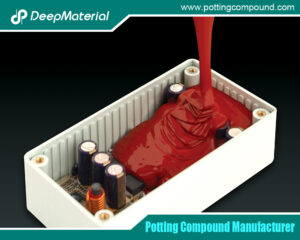
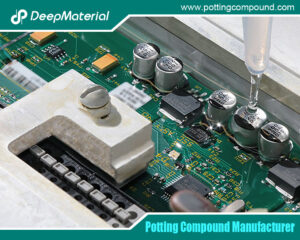
How Does Epoxy Encapsulated LED Work?
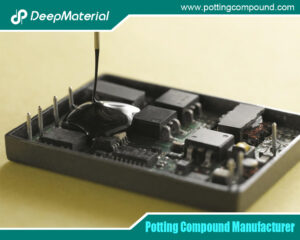
Which Glues Are Suitable for Encapsulation of Electronic Products?

